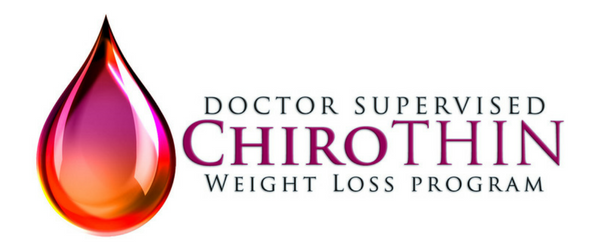
According to Orlando Health, an astonishing 97% of Americans don’t follow a healthy lifestyle.
Obesity numbers are up, poor diets abound, and the population is rapidly aging – we’re on track to have a 47% increase in seniors by 2050. If you know that you’ve put your health on the back burner, it’s important to know that it’s never too late to make big changes.
The easiest place to start your health journey is with your diet. In today’s post, we’ll tell you 6 things to eat for a healthier life. When you get your essential nutrients and vitamins, you can set a fantastic foundation for improving your overall health.
Within days of eating the following foods, you’ll notice a huge difference in the way your body feels. Keep reading and change your diet for the better.
1. Leafy Green Vegetables
Leafy greens – kale, spinach, bok choy, micro greens, etc. – are extremely beneficial foods because they’re full of vitamins, fiber, antioxidants, and other nutrients. Specifically, these vegetables contain vitamins A, C, and E, all of which are important for bone health, cell growth, and immunity.
They’re also full of calcium, potassium, and most importantly, iron. You need iron so that the hemoglobin in your blood can carry oxygen from your lungs to the rest of your body. Calcium is important for bone health, and potassium for nerve and muscle health.
The fiber found in leafy greens boosts gut health and digestion while reducing inflammation. Antioxidants help repair cell damage to support healthy aging and reduce the risk of disease.
You may think that eating more leafy greens means you’ll need to eat more salads. Greens can be sauteed, roasted, or blended into smoothies with some of the other foods we’ll discuss here.
2. Whole Grains
Eating whole grains, like oats, barley, farro, and rice, comes with a wealth of health benefits. All whole grains are an incredible source of fiber – an important part of your digestive health. Collectively, whole grains give you vitamins A, B-1, B-2, B-3, B-6, and B-9, as well as iron, magnesium, and phosphorous.
Combined, all of these essential nutrients are great for lowering bad cholesterol and raising good cholesterol levels, which lowers the risk of heart disease and stroke. They’ll also lower blood pressure and insulin levels, which helps reduce the potential of diabetes.
You can implement whole grains into every meal. At breakfast, you can eat whole-grain cereals and oatmeal or substitute bagels and pastries with whole-grain versions. By substituting your regular bread products and kinds of pasta with whole-grain options, you can inject these nutrients into your diet without changing how you eat.
3. Nuts and Seeds
Nuts are an impressive source of protein, healthy fats, and a variety of vitamins (E, B6, folate, niacin). They also contain unsaturated fats, which are essential in fighting heart disease and diabetes.
Some nuts have arginine – an amino acid that maintains blood vessel health. Lastly, they’re high in dietary fiber, the benefits of which we’ve already discussed at length.
You can eat many nuts as a quick snack, but you can implement them into salads and baking to get all of the benefits mentioned here. Those who are allergic to nuts can get a lot of the same nutrients by eating seeds instead.
4. Fish
Fish, especially fatty fish – salmon, trout, herring, tuna, etc. – are an integral source of omega-3 fatty acids. These are among the most nutritious foods for heart and brain health. Our bodies don’t produce them, so we must get them from our diet and/or supplements.
Omega-3s have shown signs of lowering blood pressure – a condition that can lead to sudden death through heart attack, stroke, and arrhythmia. As for brain health, omega-3s are great for infant brain development during pregnancy, in addition to potentially reducing the risk of depression, anxiety, ADHD, Alzheimer’s, and dementia. They also reduce inflammation, especially for those dealing with arthritis.
5. Berries & Other Fruits
Various fruits are important foods for wellness. All fruit is beneficial in unique ways, but berries are truly some of the healthiest foods you could possibly eat. Most berries are full of antioxidants, important for controlling free radicals. When free radicals – aka unstable molecules – are too prevalent, they can begin to damage your cells and cause various illnesses, including cancer and arthritis.
Berries are also high in fiber and vitamins, helping to control cholesterol and boost immunity in numerous ways. They’re great before and after workouts, as they’re great at reducing inflammation and improving recovery.
Other fruits are beneficial as well. Bananas are an important source of potassium, while citrus gives you all of the vitamin C – one of the most important antioxidants. Avocadoes are considered a “super fruit”, giving you a major source of monosaturated fat that can help you maintain cholesterol levels.
6. Legumes
Legumes – broad beans, peas, lentils, chickpeas, etc. – are an incredible source of protein, especially for vegetarians. They also contain complex carbs, fiber, and other vitamins and minerals.
Legumes have little fat content and aid digestion by injecting good bacteria into your digestive system. As with most of the other amazing foods we’ve mentioned, they’re a good source of antioxidants that can help you keep your body operating properly while avoiding cancers and other major illnesses.
These are a versatile ingredient used in cultures all over the world. For example, Indian cuisine features countless dal dishes, the stars of which are various types of lentils. Beans are an integral part of Mexican cuisine and chickpeas feature heavily in Mediterranean food.
Finding the Right Things to Eat
Finding the right things to eat doesn’t have to be difficult. Squeeze a combination of these delicious and nutritious foods into your diet and you’ll lay the groundwork for a healthier lifestyle.
